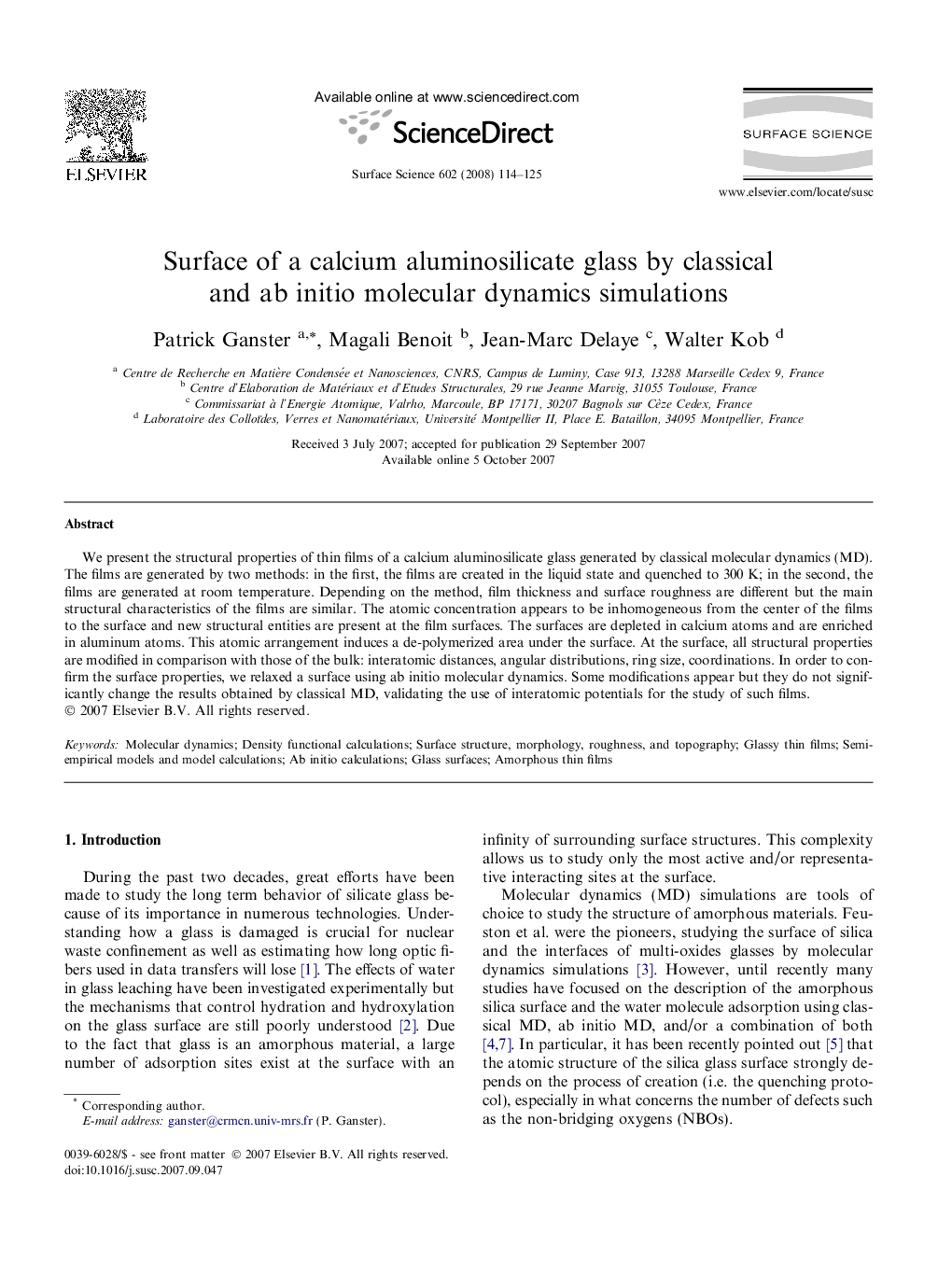| Article ID | Journal | Published Year | Pages | File Type |
|---|---|---|---|---|
| 5425352 | Surface Science | 2008 | 12 Pages |
Abstract
We present the structural properties of thin films of a calcium aluminosilicate glass generated by classical molecular dynamics (MD). The films are generated by two methods: in the first, the films are created in the liquid state and quenched to 300Â K; in the second, the films are generated at room temperature. Depending on the method, film thickness and surface roughness are different but the main structural characteristics of the films are similar. The atomic concentration appears to be inhomogeneous from the center of the films to the surface and new structural entities are present at the film surfaces. The surfaces are depleted in calcium atoms and are enriched in aluminum atoms. This atomic arrangement induces a de-polymerized area under the surface. At the surface, all structural properties are modified in comparison with those of the bulk: interatomic distances, angular distributions, ring size, coordinations. In order to confirm the surface properties, we relaxed a surface using ab initio molecular dynamics. Some modifications appear but they do not significantly change the results obtained by classical MD, validating the use of interatomic potentials for the study of such films.
Keywords
Related Topics
Physical Sciences and Engineering
Chemistry
Physical and Theoretical Chemistry
Authors
Patrick Ganster, Magali Benoit, Jean-Marc Delaye, Walter Kob,
